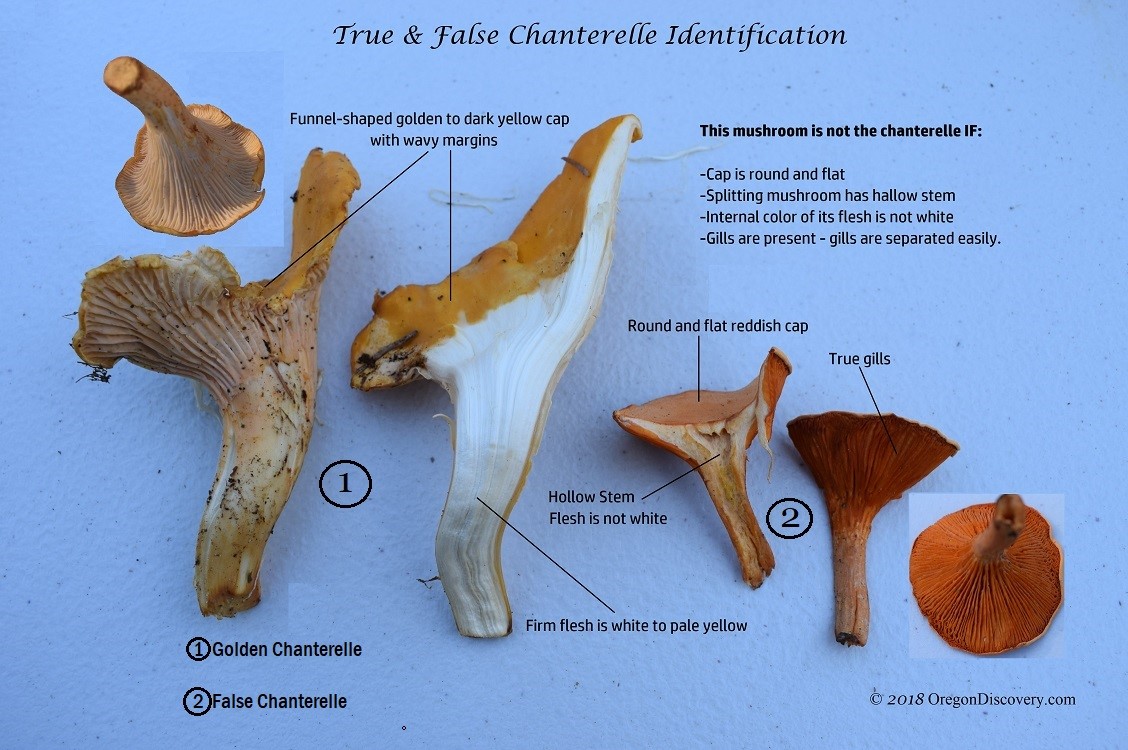By Lenore Alexander
I am by no means an expert in foraging, but there are a few forest foods I can confidently identify every time – wild blueberries, wild blackberries, wild ginger, and….Chanterelle mushrooms. Chanterelles are wonderfully tasty mushrooms, and they acted as an excellent addition to my backcountry ramen this past weekend:)
However, there is one rule for foraging mushrooms that I follow: If you have any inkling of doubt regarding the mushroom’s edibility/identification, avoid it altogether. Mushrooms are tricky because there are so many types that look similar, some nearly identical. While one might be edible, another could cause digestion issues or worse – be incredibly toxic and possibly deadly. Chanterelles, though, are common, tasty, trumpet-shaped mushrooms with a mild flavor and can be found in almost all states, especially during wet summers like this one!
Here’s how to identify a chanterelle from its most common counterparts – the False Chanterelle and Jack-o-Lantern mushroom.
The main distinctions lie in the 1) ridges/gills of each of these mushrooms, 2) growing location, 3) color, 4) smell, and 5) overall shape.
1) To find the ridges/gills of a mushroom, look on its underside. To determine whether or not these gills are “forked” or not, follow the lines that travel from the stem to the outer rim and see if they split.
-
- Chanterelles have forked ridges (not true gills) that are light in color and kind of rubbery to the touch.
- False Chanterelles have forked orange gills that can be separated (they move when stroked and are deeper than those of true Chanterelles).
- Jack-o-Lantern mushrooms do NOT have forked gills – their gills are straighter.
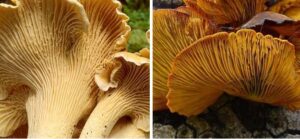
2) Some mushrooms grow on top of wood, while others just grow straight from the soil. Some mushrooms also grow in clusters with attached stems, while others grow separate.
-
- Chanterelles never grow on wood. Chanterelles do grow separated from one another, as do false ones.
- Jack-o-Lantern mushrooms always grow on wood. Look closely to see if the mushroom is growing on heavily decayed wood or just the ground – usually this is the easiest differentiation tool. Jack-o-Lantern mushrooms also grow in clusters.
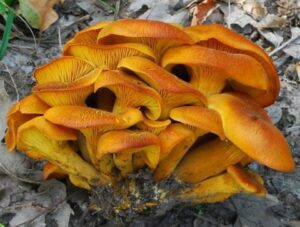
3) Comparing colors of Chanterelles with Chanterelle look-alikes without referencing the other can be difficult.
-
- Chanterelles are yellowish-orange on the outside and white on the interior.
- Jack-o-Lantern mushrooms glow in the dark – which is really cool to see! Though they have a similar but slightly darker yellow-orange color, their ability to glow in the dark is a fun distinguishing factor.
- False Chanterelles are more orange than yellow and a deeper shade of orange at the cap (top). When cut open, False Chanterelles also are NOT pure white inside and often instead orange-ish with a slightly hollow stem.
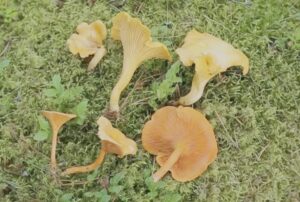
4) You’ll have to split or cut the mushroom in half (lengthwise) to smell it fully.
-
- Chanterelles smell mildly sweet! Their smell is usually described as apricot-like, but as someone who doesn’t regularly eat apricots, I just think it smells slightly fruity.
- False Chanterelles just smell like your typical mushroom from the store. I don’t know how to describe their smell other than mushroom-y.
5) Shape is another good factor in identifying these mushrooms but varies depending on the mushroom’s maturity.
-
- Mature Chanterelles have wavy, irregular edges and are conically shaped, like a trumpet or funnel.
- Jack-o-Lantern mushrooms generally lack the same degree of waviness on their edges and are relatively rounded, but the other factors (particularly growing location, clustered pattern, and gills) should be more of a give-away.
- While mature False Chanterelles might have a slight wave on its edges, young ones are very much rounded. Overall, False Chanterelles lack the same conical shape as the real ones and have a more consistent stem thickness.
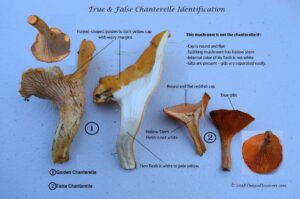
So, do you feel confident? When picking a mushroom, cut the stem cleanly about 2 inches above the ground – don’t pull or dig out. Mushrooms need the fungus that lies underneath the ground to bear their fruit once more. Please pick responsibility, bring a field guide for reference, and enjoy!
References (aside from my trusty field guide of Mushrooms of the Southeast) and images from:
About the author
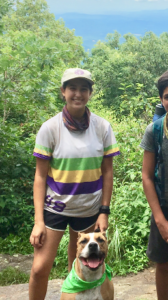
Name: Lenore Alexander
Year in School: Senior
Major: Political Economy (Minors: Studio Art, Spanish)
Hometown: Atlanta, Georgia
Favorite Outdoor Activity: Hiking and nature art
Favorite Camp Food: Rocky Mountain Toast (with fresh eggs and foraged mushrooms!)
Ideal Outdoor Adventure Trip Destination: Backpacking in the Canadian Rockies
If you were stranded on a desert island, what/who would you bring with you: My backpack with a knife, water filter, and disc inside… and my dog.
